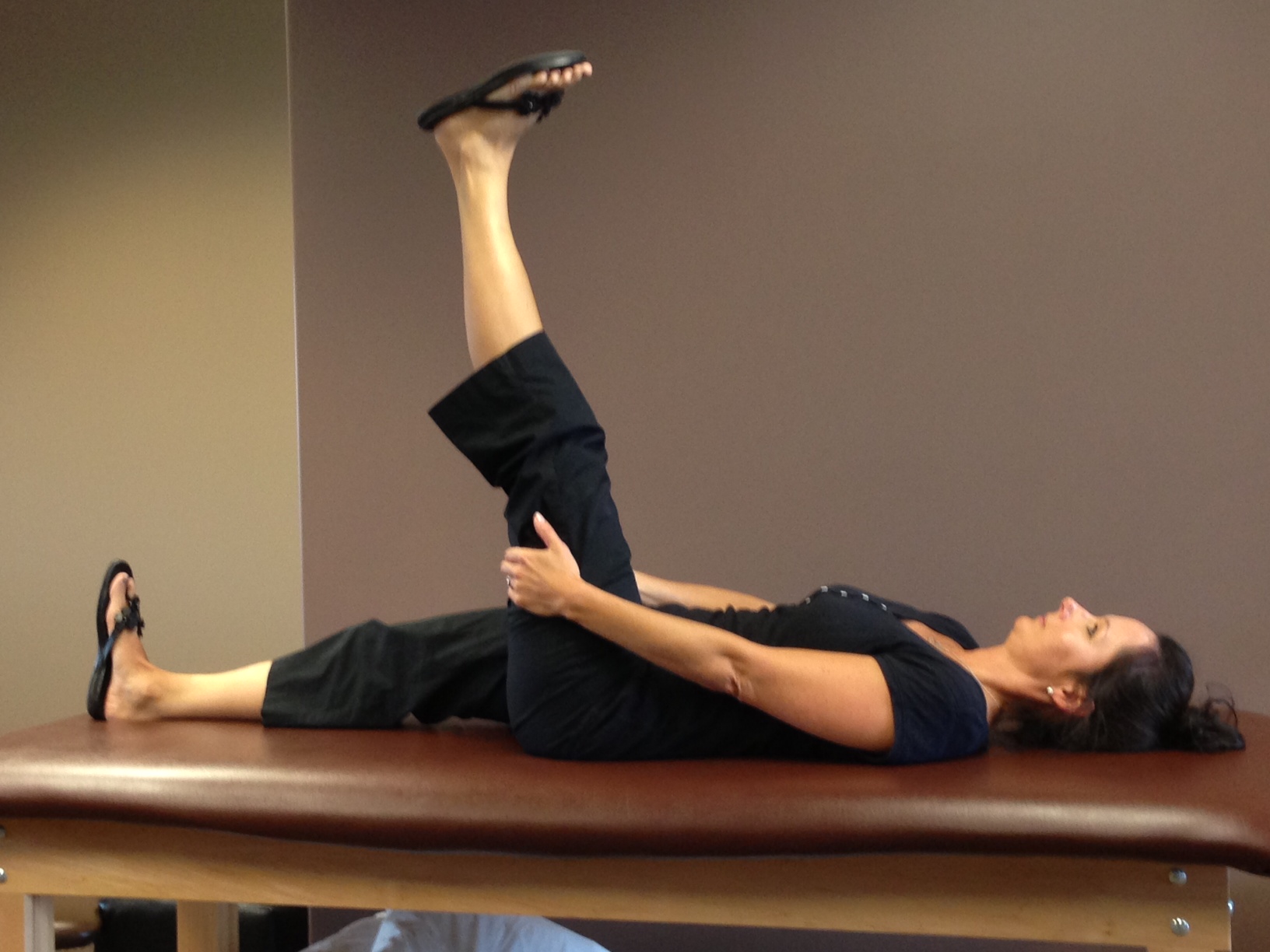Anatomy

Anatomy of the hamstring
Of the 650 muscles in the human body, the hamstring group (semitendinosis, semimembranosis, and biceps femoris) is one of the more important and complex in the entire body. Anatomically, the hamstrings are considered two joint muscles because they cross both knee and hip joints. Functionally, they strongly influence the entire lower extremity, pelvis and back, but also have an effect on much of the body. The upper end of the group attaches to the ischial bone of the pelvis and is able to rotate the pelvis backward (posterior pelvic tilt) and control forward rotation (anterior pelvic tilt) of the pelvis. This pelvic rotation results in an increase or decrease in spinal curvature. The distal end attaches to the tibia on either side and allows the ability to flex the knee and decelerate extension of the knee. Because of this complex function, it is a commonly injured muscle.
Flexibility
Generally speaking, flexibility of the hamstrings is overrated. Although many practitioners place a strong emphasis on superior hamstring flexibility, it is the opinion of Postural Restoration trained therapists that a modest amount of flexibility is best. More length is not always better and in many cases is detrimental. Only a few sports require the athlete to have superior hamstring length and included in that list are gymnastics, dance, cheer, and hurdling. Although I would consider the extreme flexibility present in these athletes unhealthy, it is necessary for athletic success and needs to be balanced with superior strength of the muscle. All other athletes and non-athletes should strive for 80-90 degrees of straight leg raise and no more as shown below.

Optimal Hamstring Length

Excessive Hamstring Length
Strength
Physiologically, a long muscle is considered a weak muscle because it is not able to generate maximum force due to an altered length-tension relationship within the muscle fibers. So there is an ideal length that will allow for optimal strength. The term “strength” will be used loosely because what really is important is the function of the muscle. It needs to be active. Most of the time it does not need massive strength, but does need to be very active at the correct time and in cooperation with other muscles. Therefore, it must be trained properly in the correct position without compensation from other muscles. For example, it is very common to incorrectly work the hamstring in conjunction with the back muscles and without adequate abdominal activity. The low back muscles (paraspinals) and hamstrings are antagonistic muscles meaning they have the opposite function. Therefore, the hamstring needs to be trained without the back muscles being activated or they cannot function properly together as the back will dominate the hamstring muscles during daily activities and sports.

Example of a hamstring exercise without back activity
Helpful Tips
- Again, do not overstretch your hamstrings. If you can achieve an 80-90 straight leg raise you are fine. Some light stretching as a warm up for activity is OK but do not push for more flexibility. If you are short of the 80 position you may do some stretching for more flexibility.
- Touching your toes is not necessarily a good measure of hamstring flexibility. Many times it is the back muscles that limit your ability to touch your toes. Just because you feel stretching behind your thighs does not mean they are tight. They are just active when you are bent over which is good.
- Some people feel their hamstrings are tight and feel the need to stretch because of a sensation of tightness behind the thigh. This may not be a sign of a lack of flexibility, but may be chronic tension in the muscle. Do the straight leg raise test.
- Use your hamstrings more during daily activities. Make sure you heels strike the ground when you walk, press through the heels and not the toes when squatting, and relax your low back. A tight, tense low back will inhibit your hamstrings.





